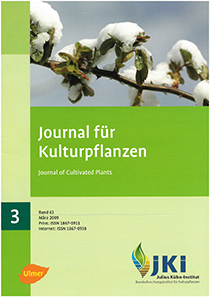Quaternary Integrated Pest Management concept for powdery mildew in sugar beet. III. Economic damage threshold and loss prediction
DOI:
https://doi.org/10.5073/JfK.2009.03.03Keywords:
Beta vulgaris, epidemiology, economic damage threshold, Erysiphe betae, loss prediction, Quaternary IPM- (Integrated Pest Management) concept.Abstract
The economic damage threshold and loss prediction are part of the Quaternary IPM (Integrated Pest Management) -concept developed for the control of powdery mildew in sugar beets. The evaluation of 73 field trials, conducted under the climatic conditions in central Europe (1993-2004), established that powdery mildew may cause 10-15% sugar yield losses and 0.5-0.7 % (absolute) reductions of sugar content at the maximum. The losses occur preferably under conditions of early disease initiation in July and high susceptibility of cultivar. Such situations also may increase the content of αAminoNitrogen and, therefore, the recovery of sugar may be reduced by 1-2%. The other non sucrose components are not affected through powdery mildew. Derived from disease loss relationships and after summarising all yield and quality factors, the value of AUDPC (Area Under Disease Progress Curve) 2, equal to a sugar yield loss of 1.8 %, is defined as the economic damage threshold.
In view of loss prediction, the exceeding of the economic damage threshold is likely if first symptoms appear before mid-August, the risk period is extended to the end of August in case of high susceptibility of cultivar. The risk periods are equal to action zones for fungicide treatments.
Published
Issue
Section
License
The content of the journal is licensed under the Creative Commons Attribution 4.0 License. Any user is free to share and adapt (remix, transform, build upon) the content as long as the original publication is attributed (authors, title, year, journal, issue, pages).
The copyright of the published work remains with the authors. The authors grant the Journal of Cultivated Plants, the Julius Kühn-Institut and the OpenAgrar repository the non-exclusive right to distribute and exploit the work.







